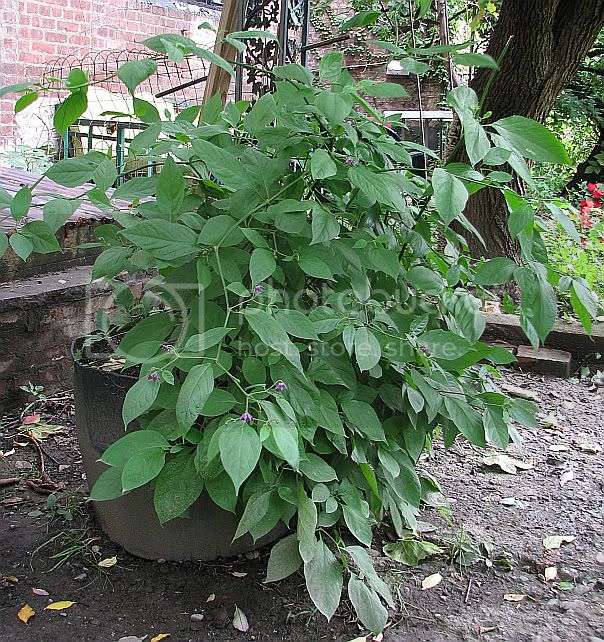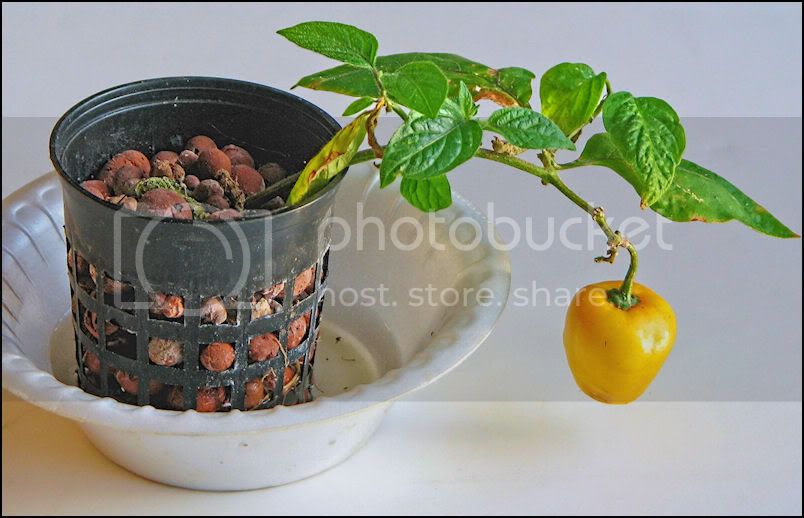that guy has to be an engineer, can't believe he took a 10 minute process and made it a day long project.
i found when i switched to 20-20-20 i got leaf burn and switched back to 15-15-30 tomato fertilizer after changing the water. when all my plants were young and approximately the same age, i used 10-52-10. as they grew i switched up to the tomato fertilizer. but, i have this bucket of general all purpose fertilizer that i thought i would use up as it has been in the garage for about 15 years - i had to switch back. if you want to further research this, just read up on general hydroponics solutions and see when they recommend adding their floragro/floramicro/florabloom products. you may also be able to reference it back to feeding of nutrients with the aerogarden(their tablets). i am currently looking at a product from CIL, it is a granular vegetable fertilizer product with 8-8-8 listed but for micro nutrients contains added calcium, magnesium and sulfer along with the others(iron,boron,copper,zinc etc) but i hate to spend $13 for the pail when my tomato fertilizer is working fine.
your air pump won't add more oxygen into the water (infusion), all the air pump does is agitate the water and nutrient. it also helps to keep the water slightly cooler, which helps to keep oxygen in the water, oxygen is released as the water temperature gets warmer, plus you get evaporation. in order to infuse oxygen into water you have to do the smash test; you would have to rig a system that puts a pipe just at the surface of your water(so the water doesn't splash all over the place), i would guess that pipe would have to be at least 10feet in length. then let water drop through the pipe and smash onto the water surface, this would infuse some oxygen - think waterfall.
but, doesn't that really complicate something that is so simple - just add more water? forget the ph meter, most city water supplies are ph balanced, once your plants get growing if you feel they are sickly and you feel it may be ph related, then go out and get a ph meter. as for plants dieing and leaving roots that contaminate the water and other plants, that i don't get unless the dieing plant died of a root virus. if you have a root virus you have bigger problems, because it would point to your seeds being infected and all your seeds would have to be tossed. or you have a natural airborn disease and you would have to sterilize your entire grow room. again, going way over the top - over analyzing.
as for size, if your plants get too big, they may just fall over with out support. i had to keep cutting back my hot lemons as they were towering and i had a hard time controlling their growth spurts (i am constantly pinching off leaves but new growth continually appears and i kind of think this encourages new growth) - they were 2 feet tall when i moved them into soil. which is something i do, grow the plants to 4-8 inches then into soil they go.
before adding plants, you may wish to fill your bucket with water and let it run with the air pump for a night to help evaporate any excess chlorine from your city water - every city has what they believe to be the necessary chlorine acceptable levels and floride(if your city adds that). unless you have a reverse osmosis filtering system then you are good to go.
good luck and may your plants be as big as my mother-in-law! doh!


